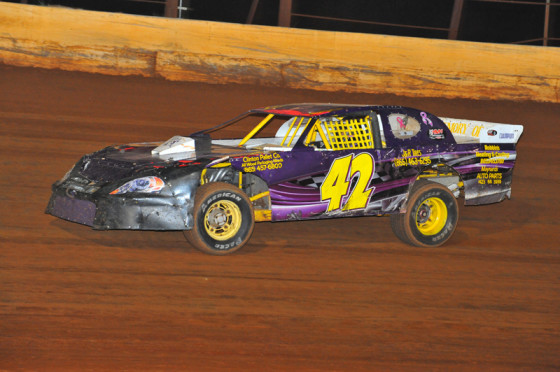When discussing the health of modern-day dirt racing, followers of the sport often point to the huge purses being offered for Super Late Model and Sprint Car events. Indeed, $50,000-to-win features are becoming almost commonplace while some midweek shows are even doling out paychecks to race winners valued at $20,000 or more. There was even a $1,000,000-to-win Late Model race last season at Eldora Speedway and there will be a similar offering on that track this year for Sprint Cars.
But is that good fortune making its way down into the lower ranks?
There does seem to be a greater divide developing between the highest level of dirt racing and the so-called weekly classes or support classes. While payouts have increased for some races at that level, that growth does not appear to be increasing at the same rate as those of the higher ranks.
Another thing that seems to have increased over the years is the amount of discontent between racers in the weekly classes and promoters. With fewer and fewer tracks actually staging weekly shows, the divisions such as Street Stocks or Sportsman or Min-Stocks are more often than not used as support classes for the biggest Late Model contests. And to be blunt about it, some view those races as little more time fillers meant to give the star attractions a few extra minutes to work on their cars before the primary heat races and/or feature rolls out.
That circumstance results in a great deal of inconsistency as far as when and where these drivers and teams will have opportunities to race. That, in turn, causes those who want to race to feel left out at best and betrayed at worst. These feelings often make their way onto the various social media platforms causing tracks to defend their choices in terms of which classes they opted to employ on a particular night.
As I see it, one problem that could be labeled as a cause for some being left on the nights of special events is the number of classes that some tracks have. There are some venues that have six, seven, or even eight divisions listed as part of their weekly offerings. If a major touring series is coming to that facility, it would be virtually impossible to run that many classes along with the hot laps, qualifying, heat races and B-mains needed to get to the feature race for that touring series without going into the wee hours of the morning. Many tracks are doing better than was the case a decade or more ago in terms of time management, and to do that, they often are forced to exclude some of their regulars on a given night.
Obviously, promoters want to make as much money as they can and scheduling the right divisions in order to increase the revenue taken in through the pit gate is one way to do that. Hence, those classes that do not typically draw very many cars may be excluded for the purpose of time management while those which draw more cars will be included because of the numbers of extra crew members and fans that will pay for an armband.
Part of the issue in terms of having too many divisions comes from the fact that many drivers want to race in a Late Model division, even if it is not one of the top tier classes. Answering this call, promoters have sought to incorporate lower cost Late Model classes.
These so-called economical Late Models don’t remain low cost for very long as teams seek out ways to find an edge, which of course, entices them to spend more money. After losing several times to those spending the most money, those who can’t afford the same technology clamor for a new class with more rules meant to keep the costs down. Thus, a new division of Late Models is formed.
At some race tracks there can be as many as three, four, or even five Late Model classes running on the same night. Often times as I walk through the pit area of a track hosting a touring series race, someone will ask how many cars there are for that series. My answer is typically, “I can’t tell because all the cars look the same to me.”
No doubt, promoters and track owners face this same dilemma in classes such as Street Stock, Modifieds, and Mini-Stocks as well. Everybody wants to feel like they at least have some chance to win the particular feature they have entered. However, that sometimes leads to races with very few cars on the track.
I have said for some time now that Covid, along with its lockdowns and other restrictions, changed all forms of racing, particularly that on dirt, more than we could have ever guessed. Live steaming of major events has now become the primary way for many to watch races. Those outlets often use the breaks in between Late Model qualifying, heats, and the feature to show commercials or have studio discussions and interviews rendering other classes not quite so necessary to fill the gaps.
Promoters have to then balance what they need in terms of pit gate revenue against what the streamers need in terms of time management.
With the prices of necessities such as tires, fuel, and all the myriad of pieces and parts at their highest levels in years if not ever, those who hope to compete in the weekly or support divisions of dirt racing will find it more and more difficult to do so. And with the factors of the ever growing number of big Late Model shows combined with the fact that some classes often find themselves squeezed out, the future looks somewhat uncertain for some forms of dirt racing.
Please consider also reading:
Respond to this post on Twitter by following @RichardAllenIDR and @MichaelRMoats or by liking the InsideDirtRacing.com Facebook page.
Also, NASCAR and pavement racing fans can check out InsideCircleTrack.com






